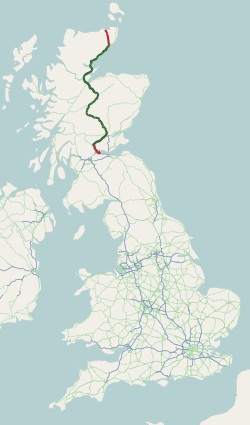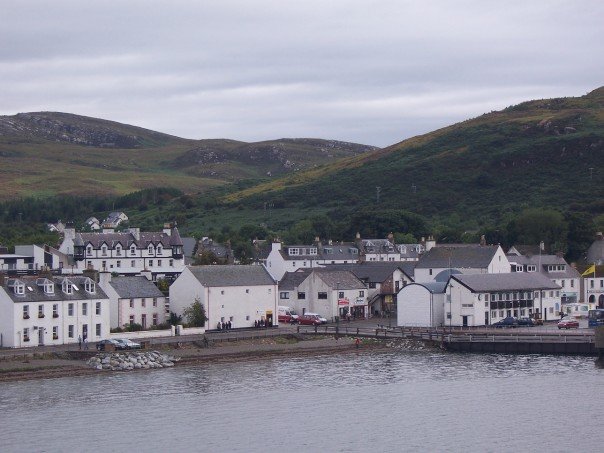|
Sheigra
Sheigra or Shegra is a small holiday settlement on the east coast of the Tongue district of Sutherland in the Highland Highlands or uplands are areas of high elevation such as a mountainous region, elevated mountainous plateau or high hills. Generally speaking, upland (or uplands) refers to ranges of hills, typically from up to while highland (or highlands) is ... council area in Scotland. It is located 4 miles from Kinlochbervie and the B801 road and nearly 60 miles from Thurso and the A9 and 40 miles from Ullapool and the A835. The settlement consists mostly of lodges, holidays homes, beaches and campgrounds. Norse vikings used Sheigra as a stopover on their journey to pillage the township of Conlig in County Down, Northern Ireland in their search for gold and silver left behind by Spanish pilgrims. The Norse culture was left behind and today still exists through local dialect, customs and dress. References Populated places in Sutherland {{Highland-geo ... [...More Info...] [...Related Items...] OR: [Wikipedia] [Google] [Baidu] |
Tongue, Highland
Tongue ( gd, Tunga from non, Tunga) is a coastal village in northwest Highland, Scotland, in the western part of the former county of Sutherland. It lies on the east shore above the base of the Kyle of Tongue and north of the mountains Ben Hope and Ben Loyal on the A836. To the north lies the area of Braetongue. Tongue is the main village in a series of crofting townships that runs through Coldbackie, Dalharn, Blandy, and the harbour of Scullomie to the deserted township of Slettel. The village includes a youth hostel, a craft shop, a general store and garage, a bank, a post office and two hotels, the Tongue Hotel and the Ben Loyal Hotel. It is connected to the west side of the Kyle by the Kyle of Tongue Bridge and Causeway, built in 1971. Toponymy Contrary to popular belief, the name Tongue does not refer to the shape of the Kyle of Tongue (though the kyle ''can'' be described as "tongue-shaped"). Rather it is a geographical term in Old Norse which refers to a piece of lan ... [...More Info...] [...Related Items...] OR: [Wikipedia] [Google] [Baidu] |
Sutherland
Sutherland ( gd, Cataibh) is a historic county, registration county and lieutenancy area in the Highlands of Scotland. Its county town is Dornoch. Sutherland borders Caithness and Moray Firth to the east, Ross-shire and Cromartyshire (later combined into Ross and Cromarty) to the south and the Atlantic to the north and west. Like its southern neighbour Ross-shire, Sutherland has some of the most dramatic scenery in Europe, especially on its western fringe where the mountains meet the sea. These include high sea cliffs, and very old mountains composed of Precambrian and Cambrian rocks. The name ''Sutherland'' dates from the era of Norwegian Viking rule and settlement over much of the Highlands and Islands, under the rule of the jarl of Orkney. Although it contains some of the northernmost land in the island of Great Britain, it was called ' ("southern land") from the standpoint of Orkney and Caithness. In Gaelic, the area is referred to according to its tradi ... [...More Info...] [...Related Items...] OR: [Wikipedia] [Google] [Baidu] |
Highland (council Area)
Highland ( gd, A' Ghàidhealtachd, ; sco, Hieland) is a council area in the Scottish Highlands and is the largest local government area in the United Kingdom. It was the 7th most populous council area in Scotland at the 2011 census. It shares borders with the council areas of Aberdeenshire, Argyll and Bute, Moray and Perth and Kinross. Their councils, and those of Angus and Stirling, also have areas of the Scottish Highlands within their administrative boundaries. The Highland area covers most of the mainland and inner-Hebridean parts of the historic counties of Inverness-shire and Ross and Cromarty, all of Caithness, Nairnshire and Sutherland and small parts of Argyll and Moray. Despite its name, the area does not cover the entire Scottish Highlands. Name Unlike the other council areas of Scotland, the name ''Highland'' is often not used as a proper noun. The council's website only sometimes refers to the area as being ''Highland'', and other times as being ''the ... [...More Info...] [...Related Items...] OR: [Wikipedia] [Google] [Baidu] |
Scotland
Scotland (, ) is a country that is part of the United Kingdom. Covering the northern third of the island of Great Britain, mainland Scotland has a border with England to the southeast and is otherwise surrounded by the Atlantic Ocean to the north and west, the North Sea to the northeast and east, and the Irish Sea to the south. It also contains more than 790 islands, principally in the archipelagos of the Hebrides and the Northern Isles. Most of the population, including the capital Edinburgh, is concentrated in the Central Belt—the plain between the Scottish Highlands and the Southern Uplands—in the Scottish Lowlands. Scotland is divided into 32 administrative subdivisions or local authorities, known as council areas. Glasgow City is the largest council area in terms of population, with Highland being the largest in terms of area. Limited self-governing power, covering matters such as education, social services and roads and transportation, is devolved from the ... [...More Info...] [...Related Items...] OR: [Wikipedia] [Google] [Baidu] |
Kinlochbervie
Kinlochbervie ( gd, Ceann Loch Biorbhaidh, ) is a scattered harbour village in the north west of Sutherland, in the Highland region of Scotland. It is the most northerly port on the west coast of Scotland. Geography Sandwood Bay, a scenic beach, is about a drive or a walk north of Kinlochbervie. Other scenic areas close to the village include Oldshoremore Beach and Rhiconich. Fishing The majority of local industry is based upon fishing. Although the fleet of ships actually based in Kinlochbervie is rather small, many ships from the east coast of Scotland land their catches in Kinlochbervie. The dominant feature of the town is the large fish handling depot. From here catches are loaded onto large refrigerated lorries for transport by road throughout Europe. The importance of this link to the outside world to the local economy means that Kinlochbervie has surprisingly good road links, given its remote location and rugged local geography. Tourism The local scenery is a tourist ... [...More Info...] [...Related Items...] OR: [Wikipedia] [Google] [Baidu] |
B801
B8, B VIII or B-8 may refer to: Transport Roads * B8 (Croatia), an expressway part of the Istrian Y highway network * B8 road (Cyprus) * B8 road (Kenya) * B8 road (Namibia) * Bundesstraße 8, a road in Germany Other uses in transport * B8 (New York City bus) serving Brooklyn * Bavarian B VIII, a German steam locomotive model * Bensen B-8, a 1955 United States small single-seat autogyro * , a B-class submarine of the Royal Navy * Mazda B8, a piston engine * Fokker XB-8, a bomber prototype built for the United States Army Air Corps * B8, the IATA code for Eritrean Airlines Biology * Proanthocyanidin B8, a B type proanthocyanidin * Vitamin B8, a name sometimes used for inositol * HLA-B8, an HLA-B serotype Other * B8 (bronze), an alloy used in cymbals * b8 (spam filter), a statistical spam filter implemented in PHP * Boron-8 (B-8 or 8B), an isotope of boron * B8, a type of stereoautograph * A subclass of B-class stars * An international standard paper size (62×88 mm), defin ... [...More Info...] [...Related Items...] OR: [Wikipedia] [Google] [Baidu] |
Thurso
Thurso (pronounced ; sco, Thursa, gd, Inbhir Theòrsa ) is a town and former burgh on the north coast of the Highland council area of Scotland. Situated in the historical County of Caithness, it is the northernmost town on the island of Great Britain. From a latitudal standpoint, Thurso is located further north than the southernmost point of Norway and in addition lies more than north of London. It lies at the junction of the north–south A9 road and the west–east A836 road, connected to Bridge of Forss in the west and Castletown in the east. The River Thurso flows through the town and into Thurso Bay and the Pentland Firth. The river estuary serves as a small harbour. At the 2011 Census, Thurso had a population of 7,933. The larger Thurso civil parish including the town and the surrounding countryside had a population of 9,112. Thurso functioned as an important Norse port, and later traded with ports throughout northern Europe until the 19th century. A thriving fis ... [...More Info...] [...Related Items...] OR: [Wikipedia] [Google] [Baidu] |
A9 Road (Scotland)
The A9 is a major road in Scotland running from the Falkirk council area in central Scotland to Scrabster Harbour, Thurso in the far north, via Stirling, Bridge of Allan, Perth and Inverness. At 273 miles (439 km), it is the longest road in Scotland and the fifth-longest A-road in the United Kingdom. Historically it was the main road between Edinburgh and John o' Groats, and has been called ''the spine of Scotland''. It is one of the three major north–south trunk routes linking the Central Belt to the Highlands - the others being the A82 and the A90. The road's origins lie in the military roads building programme of the 18th century, further supplemented by the building of several bridges in later years. The A9 route was formally designated in 1923, and originally ran from Edinburgh to Inverness. The route was soon extended north from Inverness up to John O'Groats. By the 1970s the route was hampered by severe traffic congestion, and an extensive upgradin ... [...More Info...] [...Related Items...] OR: [Wikipedia] [Google] [Baidu] |
Ullapool
Ullapool (; gd, Ulapul ) is a village and port located in Northern Scotland. Ullapool has a population of around 1,500 inhabitants. It is located around northwest of Inverness in Ross and Cromarty, Scottish Highlands. Despite its modest size, it is the largest settlement for many miles around, and an important port and tourist destination. The North Atlantic Drift passes Ullapool, moderating the temperature. A few '' Cordyline australis'' (New Zealand cabbage trees) are grown in the town and are often mistaken for palm trees. The town lies on Loch Broom, on the A835 road from Inverness. The Ullapool River flows through the village. History On the east shore of Loch Broom, Ullapool was founded in 1788 as a herring port by the British Fisheries Society. It was designed by Thomas Telford. Prior to 1788 the town was only an insignificant hamlet made up of just over 20 households. The harbour is used as a fishing port, yachting haven, and ferry port. Ferries sail to Stornoway i ... [...More Info...] [...Related Items...] OR: [Wikipedia] [Google] [Baidu] |
A835 Road
The A835 is a road in the Scottish Highlands linking Inverness to Ullapool and the Far North of Scotland. Route The A835 starts at Tore on the Black Isle, seven miles north-west of Inverness at a junction with the A9. The A835 crosses the Black Isle to Conon Bridge, where the A832 crosses, linking Muir of Ord to the west and Fortrose to the east, on the Moray Firth. From here the A835 follows the River Conon upstream through Contin, past Rogie Falls and Loch Garve to Garve Junction, where the A832 forks left through Strath Bran to Achnasheen. The A835 turns north through the Strathgarve and Garbat Forests, then turns again to the north-west and climbs to the Glascarnoch Dam of Loch Glascarnoch. The road then passes through Dirrie More, a high and wide mountain pass at 279m asl between Sgurr Mòr (Fannichs) and Beinn Dearg, before descending to Braemore Junction where the A832 returns after making a vast circuit around the mountains of Wester Ross and across to the we ... [...More Info...] [...Related Items...] OR: [Wikipedia] [Google] [Baidu] |




